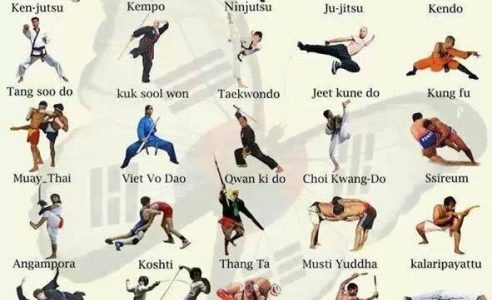Standard Taekwondo Moves For Beginners
Standard Taekwondo Moves For Beginners
Blog Article
Published By-McLain Crowell
As you step onto the floor covering, the crisp fragrance of resolution loads the air. https://eternalmartialartsandkara67655.snack-blog.com/33184656/exactly-how-taekwondo-can-change-your-health-and-fitness-journey-unleash-your-capacity-dropped-pounds-and-raise-your-self-confidence-with-this-vibrant-martial-art of Taekwondo awaits, prepared to reveal its keys and unleash your capacity.
visit the up coming document where to start? Anxiety not, for within these sacred techniques exists the structure of your trip.
From grasping the art of stances, to letting loose powerful kicks and strikes, this conversation will certainly guide you via the essential techniques that will shape you into a formidable Taekwondo expert.
So, tighten your belt and prepare to start a course of technique, stamina, and self-discovery.
Positions
To perform Taekwondo techniques efficiently, it's essential to master the proper positions. Stances are the structure of every relocate Taekwondo, supplying security, equilibrium, and power.
One of one of the most fundamental positions is the 'Steed Position.' In this stance, your feet are shoulder-width apart, knees are somewhat curved, and your weight is uniformly distributed between both legs. The Horse Position enables you to preserve a reduced center of mass, making it easier to carry out effective strikes and kicks.
An additional crucial stance is the 'Front Position.' In this stance, one leg is located ahead with the knee bent, while the various other leg is extended directly back. The Front Position is made use of for long-range strikes and provides a strong base for generating maximum power.
Kicks
Newbies in Taekwondo can learn a variety of powerful and vibrant kicks to boost their fighting styles skills. Kicks are an important part of Taekwondo, as they allow you to produce maximum power and reach your challenger from a distance.
Among the basic kicks you'll learn is the front kick, where you prolong your leg ahead and strike with the round of your foot.
An additional vital kick is the roundhouse kick, where you pivot on your supporting foot and deliver a circular kick with the top of your foot.
Furthermore, the side kick includes raising your leg sideways and striking with the edge of your foot.
Strikes
After grasping the various starts Taekwondo, it's important to currently concentrate on developing effective strikes. Below are 5 important strikes that every beginner should learn:
- Punches: Exercise throwing straight strikes with appropriate strategy and alignment. Remember to utilize your whole body to create power and maintain equilibrium.
- Palm Heel Strikes: Use the base of your palm to strike your challenger's target area, such as the nose or chin. Concentrate on god of martial arts and rate to maximize impact.
- Joint Strikes: Discover various arm joint strikes, such as the descending elbow joint or horizontal arm joint strike. These can be devastating close-range attacks.
- Ridge Hand Strikes: Make use of the side of your hand to strike at risk locations like the temple or throat. Practice proper hand positioning and go for precision.
- Knee Strikes: Establish solid knee strikes by driving your knee upwards right into your opponent's body. Concentrate on generating power from your hip turning.
Verdict
As you take your final bow, the trip of finding out important taekwondo strategies comes to an end. Yet, this conclusion marks the beginning of a new phase in your life.
The positions, kicks, and strikes you have discovered represent greater than plain physical movements; they represent self-control, willpower, and self-confidence. Embrace these teachings, and let them guide you in the direction of a more powerful, much more well balanced existence.
With each technique understood, you unlock the prospective within on your own to get over any kind of obstacle that comes your way.
